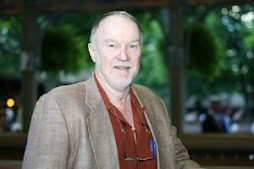The first half of the book is Tony's and serves as a brief history of the development of the Thoroughbred and the concomitant development of documentation and commentary on the breed. I've tried to cover some of this same ground in various articles and, to a lesser extent, my book Foundation Mares, but Tony has a better library and better sources available and does a much better job than I ever could. Tony has never had much time for pedigree theories that are not backed by science--appropriately so--so his dismissal of such things as Bruce Lowe and dosage are no surprise.
One of the surprising revelations of Tony's exposition, though is how little development there was--at least in print--of anything that could reasonably be called a breeding theory before the appearance of the work of Bruce Lowe in Australia and England (via William Allison) and Hermann Goos and J.P. Frentzel in Germany in the 1890s. It certainly appears that Allison was really the first commentator to push a particular mating method in print (Lowe's crackpot theories) and, since he was a bloodstock agent, doubtless advise breeders on matings (He was also part owner of a stud). Parenthetically, Allison was the man who helped choose the English broodmares bought as the basis for the studs of seminal American breeders James R. Keene, August Belmont II and Samuel D. Riddle/Walter Jeffords. It is pretty clear, however, from looking at Keene's pedigrees that his manager/brother-in-law Maj. Foxhall Daingerfield, paid no attention to Allison's/Lowe's breeding theories. Furthermore, the success of Belmont and Riddle/Jeffords was dependent almost entirely on Fair Play and his son Man o' War.
The most interesting bit of new knowledge for me in Tony's chapters is the fact that research on coat color through the pages of the General Stud Book actually played an important role in the early 1900s in verifying and popularizing Mendel's work.
Tony's repeated theme, though, is that, up until very recently indeed, none of the theories promoted to aid breeders in producing better racehorses had any real scientific basis, and precious few even attempted to establish some kind of statistical validity.
Professor Binns, a molecular biologist by training who has since started his own equine genetic testing service in partnership with David Lambert, DVM, takes over for the second half of the book. Necessarily, he begins by covering the much-trod ground of basic Mendelian genetics, but his chapters get much more interesting when he moves on to more complex variations on the basic Mendelian themes.
Matt is actually quite gentle in deconstructing theories such as the X-factor and the broodmare sire effect. In addition to pointing out that there is no basis in current scientific knowledge for such simplistic theories, he allows the possibility that future research might salvage some vestige of those and other ideas. That's what a true scientist does--lay out what is known about a subject and point out the probable verdict on a current theory, according to that research, but acknowledge that not enough is known to say precisely what the truth might be (unless, of course, there is sufficient knowledge!).
Matt's half of the book raises several questions in my mind that I plan to discuss with him, once I've followed those loose ends as far as my limited knowledge allows, but I learned a lot from his chapters, and was reminded of other bits of genetic fact that had slipped away over the years.
Matt's half does suffer somewhat from what has become the bane of the equine author--the almost two-year gap between the time he finished writing and the actual appearance of the book in the shop window. (The same thing happened with the publication of Foundation Mares.) On the last page of the book, obviously at the last possible second before publication, he inserted a brief reference to Emmeline Hill, et.al.'s publication of their work on the Myostatin gene related to distance preferences in racehorses. Much else, including Matt's own research and the launching of his testing service, has happened in equine genetics since he wrote his chapters. There are now at least five different companies offering genetic tests of various descriptions, and other than the reference to Hill's paper, none of that appears in Thoroughbred Breeding: Pedigree theories and the science of genetics.
I know that many pedigree pundits and advisors have been anxious that Tony's and Matt's book would be essentially a dismissal of all pedigree theories and research except genetics. Though some may read it that way, that clearly is not the purpose. Matt in particular clearly sees his science as an adjunct to knowledge of pedigree and conformation, not a replacement.
Read it for yourself and let me know what you think.


John, Am i to beleive that all you have wriiten and said about pedigrees is for nothing. You praise morris as if he is a genius. There were many general theories before Bruce Lowe just not specific to Thoroughbreds and to say Dangerfield paid little attention to Allison is a joke in it self. All the imported mares selected by Allison help make Keene the leading breeder of his time. And why did you write Foundation Mares if Belmont and Riddle/Jeffords were dependent almost entirely on Fair Play and his son Man o' War. ??
ReplyDeleteI guess the question won't be answered.
ReplyDeleteI can't wait to read this book. I understand what John is saying. I find it interesting that new "scientific" research can go right along with pedigree study. I am looking forward to it and the future of equine genetics.
ReplyDeleteUmmmm....Bill, you seem to confuse describing what someone writes with "praise." Just because you relate what someone else says DOES NOT mean that you agree with everything they say or that you are praising what they say.
ReplyDeleteTony is a good friend and he and I share some views in common and others decidedly not. In reviewing a book, I don't think it's my job to point out those differences.